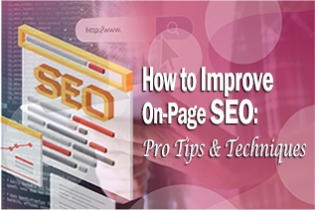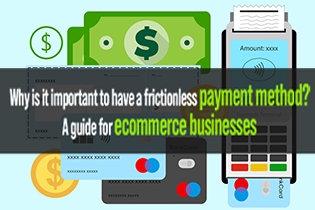
Beyond its impact on health and safety, the COVID-19 pandemic has also caused huge global lifestyle and economic disruptions, ultimately changing how people do business. As the Coronavirus threat loomed, people were urged to work from home, and e-commerce and deliveries became the new normal.
Modern-day consumers were already making many purchases on the Internet way before the pandemic hit. Still, the digital economy boom was on an entirely different level at the height of the outbreak. E-commerce sales were up by 43% in 2020, the first year of the pandemic, as people embraced social distancing and turned to online shopping more than ever before.
Today, even when the situation is largely under control, online shoppers continue to increase. This means that brands and businesses can no longer rely on foot traffic and word of mouth. You need to boost your online presence to keep up with the ever-shifting retail landscape.
How to Adapt Your SEO Strategy to the New Normal
There is no better time than the present to evaluate your on-page SEO strategy. Regardless of the economic climate, you must take measures to ensure that your brand is top of mind every time consumers make a purchasing decision.
The thing is, nothing is constant in the world of search engine optimization. Search engines are constantly tweaking and improving their algorithms to enhance user experience. As a result, SEO trends and strategies that worked a few years ago may have lost their edge.
For your brand to thrive in the new normal, you’ll need to be more mindful of consumer behavior and update your SEO strategy accordingly.
Here are some SEO tips to try this 2022:
1. Build Trust through Relevant Content

Consumers nowadays value trust and transparency above all. And one of the best ways to build trust is through relevant content that provides knowledge and answers your audience’s questions. A study found that consumers are 48% more likely to buy from a brand after reading educational content.
Early-stage educational content can help boost brand affinity and conversion rates. Instead of dialing up on promotions, you’d want to direct your efforts into transforming your website into a reliable source of information. Start by keeping your blog up-to-date and publishing informative, long-form content.
2. Optimize for Mobile

Google switched to a mobile-first index in 2020, which meant that mobile-friendly websites are given priority, resulting in a better SERP ranking. However, there’s so much more to mobile SEO than keeping Google from penalizing your website.
Today, mobile devices account for about 52% of all website traffic. If you don’t optimize your site for mobile, you stand to lose all those leads and possible conversions from mobile users.
You can use Google’s Mobile-Friendly Test tool to check how your site is faring in mobile-friendliness.
3. Create a Flawless Page Experience
In 2020, Google released the Page Experience Update, officially making page experience a core component of its ranking algorithm.
Google uses four metrics to understand how users perceive their experience of a specific web page. This includes page speed, mobile-friendliness, use of HTTPS protocol, and presence of ads.
If you haven’t been paying attention to your page experience, run your website through PageSpeed Insights to see how it performs against the Core Web Vitals. Google will then give you several suggestions for improving your page experience.
4. Improve Dwell Time
Excellent web design, fast load speed, and great mobile experience are all important ranking factors. But another lesser-known facet of user experience also affects your SEO – dwell time.
Dwell time is the amount of time a person spends at a webpage after they've clicked the link on a SERP page, but before going back to the SERP results. To Google, the higher your dwell time, the higher the probability that a particular page has satisfied the needs of its visitors.
Basically, anything that makes your site more user-friendly, especially your content, can impact your dwell time. Some of the things you can do to improve your dwell time are the following:
- Improve overall user experience
- Write quality, scannable content
- Use shorter paragraphs
- Optimize your content for readability
- Use the inverted pyramid style of writing
5. Develop More Video Content
Videos have proven to be a very effective marketing tool. During the COVID-19 pandemic, businesses across industries utilized videos to share their message to customers or help them understand new products and services more easily.
According to a 2020 survey, 41% of marketers said videos were their most efficient content marketing tool. Videos are powerful because they allow you to engage with your audience on an emotional level, making them feel more connected to your brand.
You can start dabbling in video marketing by turning an old blog post into a video or creating a video that showcases your products in a fun and refreshing way.
SEO is a Long-Term Process
Done right, these SEO practices will benefit your search engine rankings and online presence, but don’t expect almost-instant results. Quality SEO is not something that happens overnight. It takes time but yields one of the best ROI out of all digital marketing strategies.
Search engine optimization is a continuous process. If you want to achieve impressive results for your business, start running your campaign now and keep it going for as long as you want it to produce results. Pause your campaign for a while, and you may risk losing your ranking and visibility when you need it. In SEO, consistency is the key.








